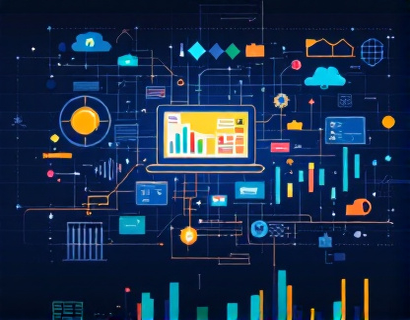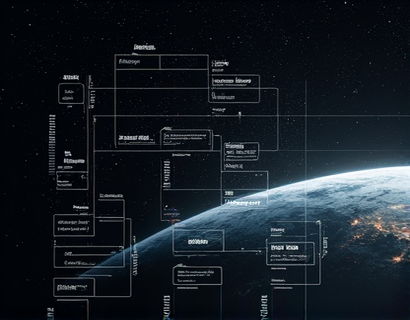Unlocking Market Potential: Navigating Economic Dynamics in Modern Ecosystems
The landscape of modern economies has evolved significantly, transforming traditional markets into complex ecosystems. These ecosystems are characterized by interconnected networks of businesses, consumers, technologies, and regulatory frameworks. Understanding the economic dynamics within these ecosystems is crucial for professionals aiming to identify and capitalize on emerging market opportunities. This guide provides strategic insights and detailed analysis to help economists, business leaders, investors, and industry experts stay competitive and informed.
Modern ecosystems are dynamic and ever-changing, driven by technological advancements, shifting consumer behaviors, and global economic trends. These factors create both challenges and opportunities for stakeholders. By navigating these dynamics effectively, professionals can uncover new avenues for growth and innovation. This article delves into the key components of modern economic ecosystems, offering a comprehensive framework for leveraging these environments to achieve strategic advantages.
Understanding Modern Economic Ecosystems
A modern economic ecosystem can be defined as a network of interdependent entities that collaborate and compete within a specific economic space. These entities include businesses of various sizes, consumers, suppliers, regulators, and technological platforms. The interactions among these components generate value and drive economic activity.
One of the defining features of modern ecosystems is their complexity. Unlike traditional markets, which are often linear and straightforward, ecosystems are characterized by multiple layers of relationships and dependencies. This complexity requires a nuanced understanding of how different elements interact and influence one another. For instance, a change in consumer preferences can ripple through the ecosystem, affecting product development, marketing strategies, and supply chain operations.
Another critical aspect of modern ecosystems is their adaptability. In response to external shocks or internal innovations, ecosystems must be able to evolve and reconfigure themselves. This adaptability is often facilitated by technological advancements, which enable faster communication, data analysis, and process automation. For example, the rise of e-commerce platforms has transformed retail ecosystems, allowing businesses to reach global markets with minimal physical infrastructure.
Key Drivers of Economic Dynamics in Modern Ecosystems
Several key drivers shape the economic dynamics within modern ecosystems. Understanding these drivers is essential for anticipating trends and making informed decisions.
First, technological innovation plays a pivotal role. Advances in areas such as artificial intelligence, blockchain, and the Internet of Things (IoT) are reshaping industries and creating new market opportunities. For instance, AI-driven analytics can provide businesses with insights into consumer behavior, enabling more targeted marketing and personalized product offerings. Similarly, blockchain technology offers enhanced security and transparency in transactions, reducing fraud and increasing trust among ecosystem participants.
Second, regulatory changes significantly impact economic dynamics. Governments and international bodies continuously update regulations to address new challenges and opportunities. For example, data privacy laws like the General Data Protection Regulation (GDPR) in the European Union have forced companies to rethink their data handling practices, leading to innovations in data management and security solutions.
Third, consumer behavior is a critical driver. Shifts in consumer preferences, such as the growing demand for sustainable and ethical products, can drive entire industries to transform. Businesses that fail to adapt to these changes risk losing market share. Companies are increasingly focusing on corporate social responsibility (CSR) initiatives to align with consumer values and enhance their brand reputation.
Fourth, global economic trends, including trade policies and geopolitical tensions, influence ecosystem dynamics. Trade agreements can open new markets and reduce barriers, while geopolitical conflicts can disrupt supply chains and create uncertainty. For instance, the ongoing trade tensions between major economies can affect global supply networks, prompting businesses to diversify their supply sources and adopt more resilient strategies.
Strategies for Navigating Economic Dynamics
To thrive in the complex and dynamic environment of modern ecosystems, professionals must adopt strategic approaches that leverage the unique characteristics of these systems.
First, embracing a culture of innovation is crucial. Businesses should invest in research and development to stay ahead of technological trends and identify new market opportunities. Collaboration with startups and academic institutions can also foster innovation, bringing fresh perspectives and cutting-edge solutions to the table.
Second, building a robust data infrastructure is essential. Data serves as the backbone of modern ecosystems, providing insights that inform decision-making. Companies should invest in advanced analytics tools and data governance frameworks to harness the full potential of their data assets. This includes not only internal data but also external data sources, such as market research and consumer feedback.
Third, fostering strong ecosystem partnerships can enhance competitive advantage. Collaboration with suppliers, customers, and technology providers can lead to synergies that benefit all parties. For example, co-creation initiatives can involve customers in the product development process, resulting in offerings that better meet their needs and preferences.
Fourth, maintaining flexibility and agility is vital. Ecosystems are inherently unpredictable, and businesses must be able to adapt quickly to changing conditions. This requires a lean and responsive organizational structure, as well as a mindset that embraces change and continuous improvement.
Finally, a focus on sustainability and ethical practices can differentiate businesses in a crowded ecosystem. Consumers and investors are increasingly prioritizing companies that demonstrate a commitment to environmental and social responsibility. By integrating sustainability into their core strategies, businesses can build long-term value and resilience.
Case Studies: Successful Navigation of Economic Dynamics
Examining real-world examples can provide valuable insights into how businesses have successfully navigated the economic dynamics of modern ecosystems.
One notable example is Netflix, which transformed the entertainment industry by leveraging technological innovation and shifting consumer preferences. Initially a DVD rental service, Netflix recognized the potential of streaming technology and invested heavily in content creation and platform development. By offering a vast library of on-demand content and personalized recommendations, Netflix disrupted traditional cable and movie rental services, becoming a dominant player in the streaming market.
Another example is Tesla, which has revolutionized the automotive industry by focusing on electric vehicles and sustainable energy solutions. Tesla's success can be attributed to its commitment to innovation, strong data-driven decision-making, and strategic partnerships. The company's direct-to-consumer sales model and Supercharger network have challenged traditional automotive businesses, forcing them to adapt and innovate.
These case studies illustrate the importance of embracing change, leveraging technology, and building strong ecosystem relationships. By learning from these examples, professionals can develop effective strategies to navigate the complexities of modern economic ecosystems.
Conclusion
Navigating the economic dynamics of modern ecosystems requires a deep understanding of the interconnected factors that drive these environments. By embracing innovation, building robust data infrastructures, fostering partnerships, maintaining flexibility, and focusing on sustainability, professionals can identify and capitalize on emerging market opportunities. As ecosystems continue to evolve, those who adapt and innovate will be best positioned to succeed in the dynamic landscape of the future.










































